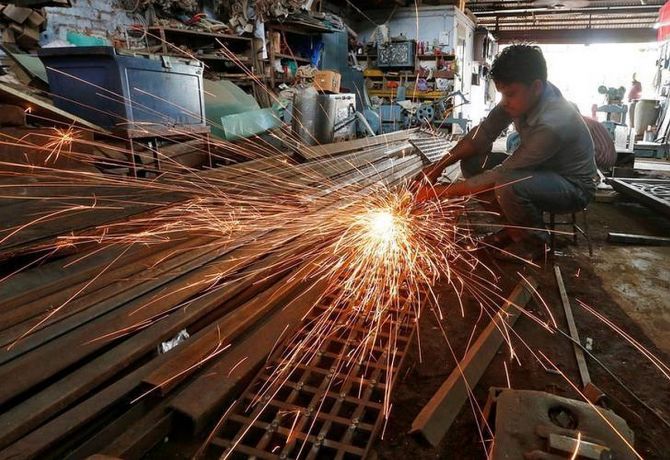Manufacturing activities in India remained robust and price pressures were contained in October as new orders and production rose at a slower but stronger pace, according to a monthly survey released on Tuesday.

The seasonally-adjusted S&P Global India Manufacturing Purchasing Managers' Index (PMI) was up from 55.1 in September to 55.3 in October.
The October PMI data pointed to an improvement in overall operating conditions for the 16th straight month.
In PMI parlance, a print above 50 means expansion while a score below 50 indicates contraction.
"The Indian manufacturing industry again showed signs of resilience in October, with factory orders and production rising strongly despite losing growth momentum," Pollyanna De Lima, Economics Associate director at S&P Global Market Intelligence, said.
Firms were able to secure additional work in October, taking the current sequence of growth to 16 months, the survey said, adding that overall, factory orders increased at an above-trend pace that was nonetheless the weakest since June.
Looking ahead, Indian manufacturers remained confident of a rise in production volumes by October 2023.
Predictions of better sales and marketing efforts were among the reasons cited for upbeat projections.
"Manufacturers continued to loosen the purse strings as they expect demand buoyancy to be sustained in coming months.
"There was a marked rise in input purchasing, with firms adding to their inventories to better align with client purchasing.
"Capacities were again expanded to accommodate for improving sales," Lima said.
On the inflation front, cost burden rose at a broadly similar rate to September's 23-month low while selling charge inflation moderated to the weakest since February, as per the survey.
On the employment front, there were signs of substantial capacity pressures at Indian goods producers as outstanding business volumes rose to the greatest extent in almost two years. Some firms responded to this by hiring extra workers.
"Manufacturing employment increased at a marked rate that was one of the strongest since data collection started in March 2005," the survey said.
For the first time since the implementation of the monetary policy framework in 2016, the Reserve Bank will submit a report to the government on its failure to keep the retail inflation rate below six per cent for three consecutive quarters beginning January 2022.
The monetary policy framework, which came into effect about six years ago, mandates the Reserve Bank of India (RBI) to maintain retail inflation at 4 per cent with a margin of 2 per cent on either side.
"Consumer goods was the best-performing category in October, recording the greatest performances for output, total sales and exports.
"Growth for all of the aforementioned areas was sustained in the intermediate and investment goods sub-sectors, albeit with slowdowns since September," Lima said.
The S&P Global India Manufacturing PMI is compiled by S&P Global from responses to questionnaires sent to purchasing managers in a panel of around 400 manufacturers.
The panel is stratified by detailed sector and company workforce size, based on contributions to GDP.












 © 2025
© 2025